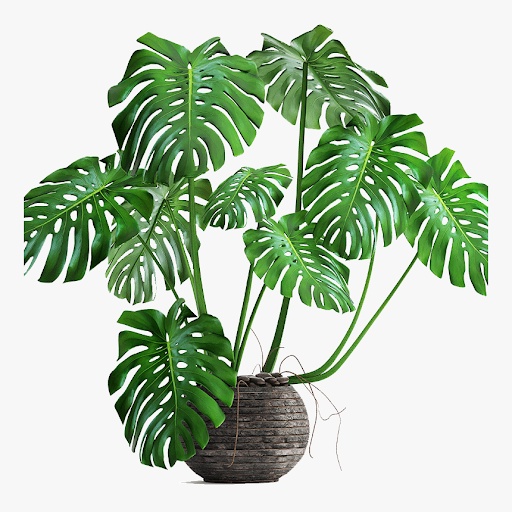In the lush world of indoor plants, one species stands out for its distinctive allure and captivating beauty—the Monstera Adansonii. Also known as the Swiss Cheese Vine, this botanical wonder has gained popularity for its unique foliage and the enigmatic charm it brings to any indoor space. Let's embark on a journey into the fascinating world of Monstera Adansonii, exploring its origins, distinctive features, and the cultural phenomenon surrounding this beloved houseplant.
1. Origins and Discovery
The Monstera Adansonii is native to the tropical rainforests of Central and South America, particularly in regions like Mexico, Panama, and the West Indies. The plant belongs to the Araceae family and is a close relative of the more well-known Monstera deliciosa. The specific epithet "Adansonii" honors the French botanist Michel Adanson, who made significant contributions to the field of natural history in the 18th century.
The plant was first described in 1794 by the botanist Henry Salisbury, and since then, it has found its way into countless homes, becoming a staple in the world of indoor gardening.
2. Foliage: Nature's Swiss Cheese
The most iconic feature of the Monstera Adansonii is its striking foliage, which resembles a piece of art created by nature. Irregularly shaped holes and splits characterize the leaves, often referred to as fenestrations. This unique trait has earned the plant its charming nickname—the Swiss Cheese Vine.
The fenestrations serve a purpose in the plant's natural habitat, allowing light to filter through the dense rainforest canopy to the forest floor. In the home environment, these captivating holes add a touch of drama and intrigue to the Monstera adansonii, making it a favorite among plant enthusiasts and interior decorators.
3. The Allure of Variegation
While the classic Monstera adansonii showcases green leaves with distinctive fenestrations, variegated varieties have captured the hearts of collectors and plant enthusiasts. Variegation introduces a mesmerizing blend of colors, featuring shades of white, cream, or even pink, along with the traditional green. These variegated versions are highly sought after for their rarity and the added visual interest they bring to any plant collection.
4. Cultural Significance and Instagram Stardom
In recent years, the Monstera adansonii has become a cultural phenomenon, achieving celebrity status on social media platforms, especially Instagram. Its visually appealing foliage and versatility in various interior settings have turned it into a darling of the online plant community. The hashtag #MonsteraAdansonii boasts millions of posts, showcasing the plant in diverse homes, from minimalist apartments to bohemian abodes.
The plant's popularity is not just about aesthetics; it also reflects a broader trend of reconnecting with nature in urban living spaces. As people seek to bring the outdoors inside, the Monstera Adansonii is a perfect ambassador, bridging the gap between the wild beauty of tropical forests and the comfort of home.
5. Propagation and Generational Joy
One of the endearing qualities of the Monstera Adansonii is its ease of propagation, allowing plant enthusiasts to share the joy of this captivating species with friends and family. Whether through stem cuttings or aerial roots, propagating the Swiss Cheese Vine has become a delightful ritual for those eager to pass on the beauty of this plant to the next generation. This communal aspect of caring for and sharing Monstera Adansonii adds an extra layer of meaning to its presence in homes worldwide.
Whether admired for its iconic fenestrations, cherished for its variegated variations, or propagated for generational joy, the Swiss Cheese Vine leaves an indelible mark on the hearts and homes of those fortunate enough to embrace its leafy embrace. So, you can easily plant these in indoor pots.
Conclusion
Monstera Adansonii transcends its role as a mere decorative element; it becomes a living expression of nature's beauty and resilience within the confines of our homes.


No comments yet